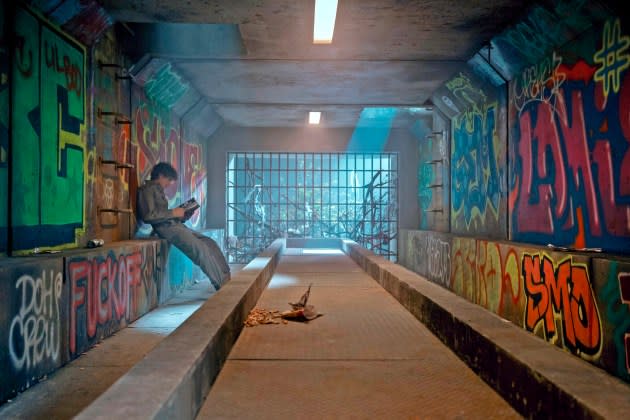Ontario’s Film Industry Grows With Amazon MGM, Netflix Opening Stages

Investing in a film and TV production facility is a tricky business. The industry is fickle under the best of circumstances, and if you’re looking to build a soundstage complex in a region that uses its tax incentive to attract projects, there’s always the possibility that politicians will repeal it in the next legislative session, effectively shutting down your studio. So it’s a testament to Ontario’s stability that Amazon MGM Studios and Netflix have both made major commitments to the Canadian province in recent months, expanding an already substantial production infrastructure that includes a wealth of equipment vendors, VFX facilities and cutting-edge LED volumes for virtual production.
“We’re in a cost-competitive environment where we’re encouraging infrastructure growth, so a stable tax credit has been priority number one for our government,” says Ontario film commissioner Jason Cutler. “We don’t have an annual cap on our tax credit, there’s no sunset clause and it’s also a refund as opposed to being a rebate or a buyback.”
More from Variety
Ontario Entices 'Reacher' and More Major Productions With Locations, Crew, Incentives
Amazon Content Spending Rose 14% in 2023 to Nearly $19 Billion
According to Cutler, there’s already 3.6 million square feet of stage space in the province, and approximately 1.8 million square feet that will become available soon.
In January, Amazon MGM Studios — which has made a number of high-profile series in the province in recent years, including “The Boys,” “Gen V,” “The Handmaid’s Tale” and “Reacher” — announced a multi-year commitment to Pinewood Toronto Studios. It will give them exclusive use of Pinewood’s five new soundstages in the city’s Port Lands section, minutes from downtown, along with workshops and office space, totaling approximately 160,000 square feet.
Competing streamer Netflix has its own production hub in Toronto servicing projects including its series “The Umbrella Academy.” It’s split between facilities owned by Pinewood and Cinespace, the latter of which is the province’s largest studio landlord, with more than 1.4 million square feet of production space at three different locations in Toronto, encompassing 29 soundstages. At Pinewood, Netflix occupies four soundstages and support space totaling approximately 84,580 square feet. In 2019, it signed a long-term lease for four stages and support space at Cinespace’s new facilities at Marine Terminal 51 and the Cruise Ship Terminal on the city’s waterfront totaling roughly 164,000 square feet.
Toronto also has a growing number of VFX studios, such as DNEG, the best known for its Oscar-winning work on “Dune” (2021), which opened a new facility in the King West district of Toronto in May 2022 with 150 employees. Rocket Science handled more than 300 shots for the first season of the Netflix series “Wednesday,” which is shot in Romania, focusing primarily on the disembodied hand Thing, while Maverick VFX has worked on numerous locally shot shows, including Hulu’s “A Handmaid’s Tale,” FX’s “What We Do in the Shadows,” Paramount+’s “Halo,” along with projects shot in other countries, including “John Wick: Chapter 4,” “A Christmas Story Christmas” and the Paramount+ series “1923” and
“The Offer.”’
“A lot of projects just come to the province for just post and visual effects work,” says Cutler.
That’s because Ontario offers an 18% refundable tax credit to Ontario-based Canadian and foreign-controlled corporations for qualifying labor expenditures for digital animation and VFX
Pixomondo already has an ongoing relationship with Paramount+ doing VFX for their Toronto-based series “Star Trek: Discovery.” On its fourth season, which premiered in 2021, they began creating virtual CGI sets for the series using a 270-degree, 70-foot x 30-foot horseshoe-shaped LED volume, created in partnership with Toronto-based studio operator William F. White Intl. They also provide CGI backdrops (animated with the video game software Unreal Engine) for the show’s spinoff series “Star Trek: Strange New Worlds,” launched in 2022, which was designed from the ground up for virtual production.
Pixomondo now has two LED volume virtual stages in Toronto and one in Vancouver, and in the future will likely see them bringing bespoke pop-up LED volumes to soundstages for other film and
TV projects.
“We can’t put a specific schedule for deploying the pop-up volume in Ontario, but it is crucial to our business model,” says Alex Webster, group head of business development at Pixomondo.
Ontario also boasts an old-fashioned brick and mortar backlot, located in a former cornfield in the town of Pickering, 34 miles northeast of Toronto. Thirty shops and storefronts, a town square, city hall and a police station were built to portray the fictional small Georgia town of Margrave for the first season of Skydance Television’s Amazon series “Reacher.”
“We were looking for a wide-open space that was close enough to our production base that was far enough away from neighbors and businesses so that we could shoot into the night and not disturb anybody,” says Drew Brown, exec VP, production, for Skydance.
“Reacher” moved on to other locations for Season 2, but William F. White Intl. made a deal with Pickering to make the backlot available for other projects.
Best of Variety
Sign up for Variety’s Newsletter. For the latest news, follow us on Facebook, Twitter, and Instagram.
